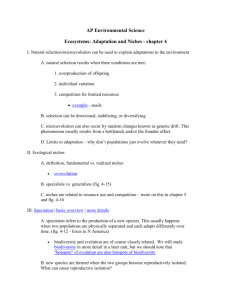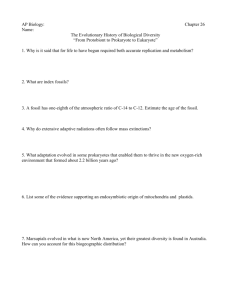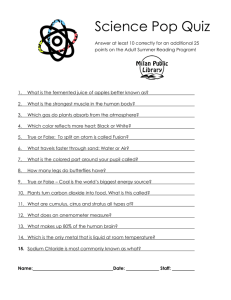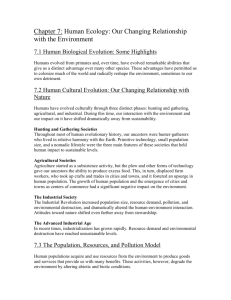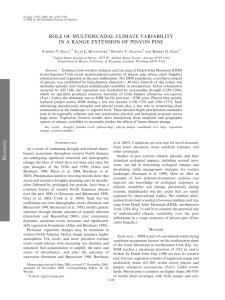Speciation & Evolution Worksheet: Types of Speciation
advertisement
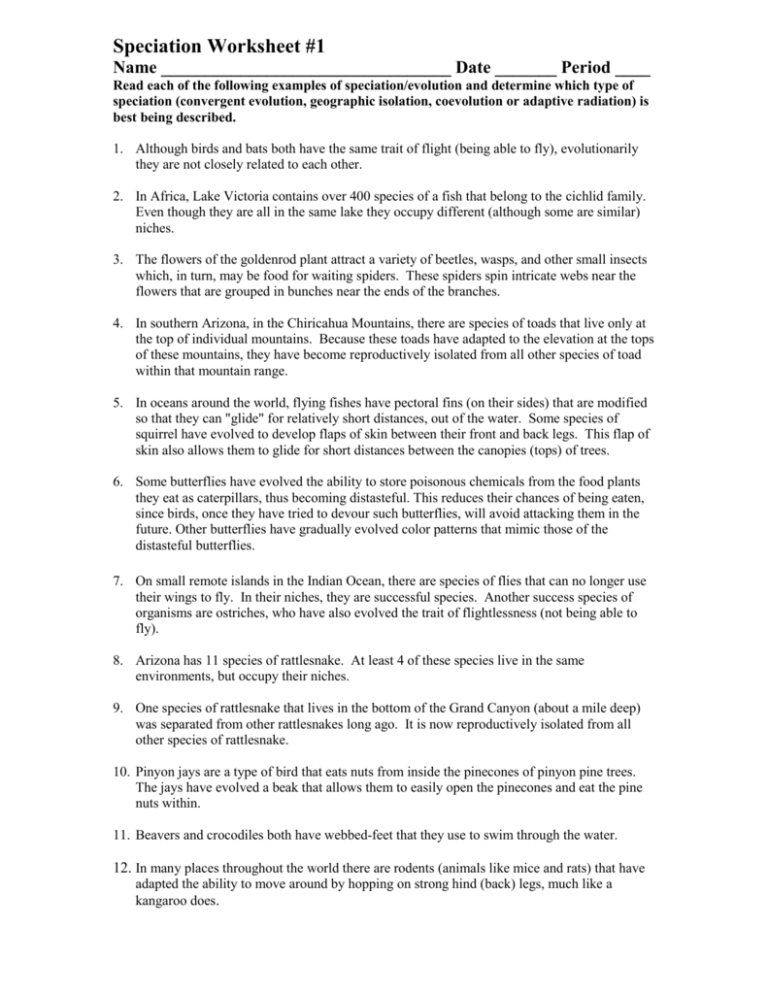
Speciation Worksheet #1 Name _________________________________ Date _______ Period ____ Read each of the following examples of speciation/evolution and determine which type of speciation (convergent evolution, geographic isolation, coevolution or adaptive radiation) is best being described. 1. Although birds and bats both have the same trait of flight (being able to fly), evolutionarily they are not closely related to each other. 2. In Africa, Lake Victoria contains over 400 species of a fish that belong to the cichlid family. Even though they are all in the same lake they occupy different (although some are similar) niches. 3. The flowers of the goldenrod plant attract a variety of beetles, wasps, and other small insects which, in turn, may be food for waiting spiders. These spiders spin intricate webs near the flowers that are grouped in bunches near the ends of the branches. 4. In southern Arizona, in the Chiricahua Mountains, there are species of toads that live only at the top of individual mountains. Because these toads have adapted to the elevation at the tops of these mountains, they have become reproductively isolated from all other species of toad within that mountain range. 5. In oceans around the world, flying fishes have pectoral fins (on their sides) that are modified so that they can "glide" for relatively short distances, out of the water. Some species of squirrel have evolved to develop flaps of skin between their front and back legs. This flap of skin also allows them to glide for short distances between the canopies (tops) of trees. 6. Some butterflies have evolved the ability to store poisonous chemicals from the food plants they eat as caterpillars, thus becoming distasteful. This reduces their chances of being eaten, since birds, once they have tried to devour such butterflies, will avoid attacking them in the future. Other butterflies have gradually evolved color patterns that mimic those of the distasteful butterflies. 7. On small remote islands in the Indian Ocean, there are species of flies that can no longer use their wings to fly. In their niches, they are successful species. Another success species of organisms are ostriches, who have also evolved the trait of flightlessness (not being able to fly). 8. Arizona has 11 species of rattlesnake. At least 4 of these species live in the same environments, but occupy their niches. 9. One species of rattlesnake that lives in the bottom of the Grand Canyon (about a mile deep) was separated from other rattlesnakes long ago. It is now reproductively isolated from all other species of rattlesnake. 10. Pinyon jays are a type of bird that eats nuts from inside the pinecones of pinyon pine trees. The jays have evolved a beak that allows them to easily open the pinecones and eat the pine nuts within. 11. Beavers and crocodiles both have webbed-feet that they use to swim through the water. 12. In many places throughout the world there are rodents (animals like mice and rats) that have adapted the ability to move around by hopping on strong hind (back) legs, much like a kangaroo does.
